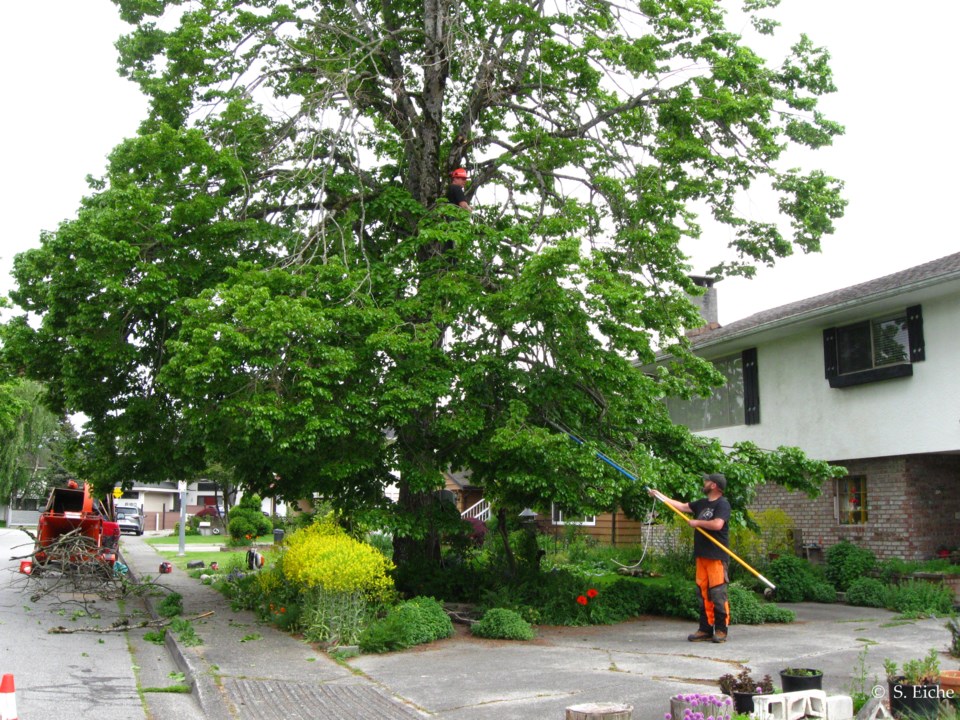We share planet Earth with the rest of nature.
Read those last four words again – the rest of nature. Humans are as much a part of the natural world as the dandelion. The dandelion happens to belong to the kingdom Plantae, and humans to the kingdom Animalia.
But we’re all on Earth together, so there’s a lot of relating going on. We can get along or not get along.
When humans don’t get along with other humans – which seems to be happening with increasing frequency – trouble ensues.Sometimes human trouble escalates to war.
When animals don’t get along with other animals, they, too, fight. But their fighting tends to be less annihilating than ours.
When plants don’t get along, they react as well, though not being as mobile as humans and animals, they’re limited in what they can do. Being adversely affected by another plant could result in stunted growth or compromised health.
We humans of the kingdom Animalia have many advantages that make it possible for us to influence all the other forms of life on planet Earth.
This doesn’t mean the rest of nature has to be in submission to us, that we have to control it.
Ideally, we aim to understand it, help it and respect it. Of course, the ideal situation doesn’t often coincide with the real situation, which is what made two experiences I had on two successive days very special.
One Sunday morning early in May, I had coffee with a friend in Vancouver.
The sun was shining. We sat in her garden. The space occupied by the garden was small and enclosed.
It was what a Renaissance Italian would have called a secret garden, a giardino segreto.
They were called secret gardens because they were segregated from the rest of the landscape; they were located next to the house or other architecture and often enclosed by garden walls.
My friend’s garden was next to the house and surrounded mostly by high hedges.
A great variety of plants grew in beds whose outlines were not strict lines but rather were as flowing as the foliage of the plants themselves.
It was a garden in which everything appeared at ease. There was no tension or conflict.
Recent research has shown that plants are able to sense and react to what is around them – including humans.
There’s anecdotal evidence that plants respond when we talk to them, when we engage with them.
In other words, plants can sense when we love them, when we care for them, not as if we were merely competent gardeners but as their friends.
If we are uncaring and ruthless (like certain present-day politicians), the plants sense it and behave as any living organism would if subjected to such treatment.
The plants in my friend’s garden were a response to her character.
Like her, they were at ease and gentle, which doesn’t mean they were soppy and floppy. No, they were dignified and well-behaved.
I’d go so far as to say they were plants that fully enjoyed being plants.
They must have sensed they were cared for by a friend who understood them and their needs.
In my neighbourhood, I see very few gardens in which the plants appear to bask in the love or understanding of the person who supposedly cares for them.
Most of the mega-mansions, at best, have one or two ornamental plants, stuck in a desert of pavement and lawn.
One of my neighbours has done the opposite – his front yard is a veritable floral pincushion.
But it’s still more of an ornament than a thriving, happy garden; perhaps the plants know they’re in danger of being sent out to pasture once they’ve stopped blooming.
On the Monday following the day I had coffee with my friend in her garden, arborists were coming to remove several dead limbs from my linden tree.
I’d called on the local arborists Ben’s Trees.
I had faith in Ben because I knew he was a keen birder. I also knew he’d take care not to harm the Jacob’s Ladders in my woodland garden beneath the tree when the cut limbs were thrown down (10 years ago, another arborist appalled me with the ruinous state in which he left my backyard).
What I didn’t know was how close a relationship Ben and the rest of nature had. I saw it clearly when my crow friend Roofie arrived.
She took to him right away, and he to her. And I saw it when I observed Ben and his team examine the linden.
In their eyes, the tree wasn’t any old tree. It was a living organism with special requirements, which they wanted to identify and take care of.
The tree must have felt safe in their hands; I certainly felt it was (so different from the tree treatment I described back in February 2022).
Nature can show us that the latest technology is not required to turn many situations from ideal to real – love, understanding, commitment, and respect will usually do it.
Sabine Eiche is a local writer and art historian with a PhD from Princeton University. Her passions are writing for children and protecting nature. Her columns deal with a broad range of topics and often include etymology in order to shed extra light on the subject.
📣 Got an opinion on this story or any others in Richmond? Send us a letter or email your thoughts or story tips to [email protected].
📲 To stay updated on Richmond news, sign up for our daily headline newsletter.
💬 Words missing in article? Your adblocker might be preventing hyperlinked text from appearing.



